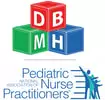Disruptive, Impulse-Control, and Conduct Disorders
Quick Links
- Conduct disorder (CD)
- Disruptive Mood Dysregulation Disorder (DMDD)
- Intermittent Explosive Disorder
- Oppositional defiant disorder (ODD)
Disruptive Mood Dysregulation Disorder*
Characterized by:
- Irritability or anger nearly all of the time.
- Verbal and/or behavioral temper outbursts that are severe, out of proportion with the situation, are inconsistent with child’s developmental level, and occur three or more times per week.
- Symptoms present consistently for 12 or more months.
- Symptoms present at home, school, or with peers (two out of the three), and are severe in at least one of these settings.
- Symptoms noticed by others in the child’s environment.
- Bipolar disorders
- Oppositional defiant disorder
- Attention-deficit/hyperactivity disorder
- Major depressive disorder
- Anxiety disorders
- Autism spectrum disorder
- Intermittent explosive disorder
- Typically appears before the age of 10 but diagnosis is not made in children younger than 6 or older than 18.
- The symptoms (excluding duration) for a manic or hypomanic episode have never been met.
- The child’s behaviors do not occur during a major depressive episode and can’t be better explained by a different mental disorder.
- The child’s behaviors can’t be attributed to the effects of a substance or a medical/neurological condition.
- DMDD cannot coexist with bipolar disorder, oppositional defiant disorder, or intermittent explosive disorder.
Assessment & Screening Tools
|
Child-Rated
|
Caregiver-Rated
|
Clinician-Rated
|
Position Papers & Practice Parameters
- AACAP's Practice Parameter for the Assessment and Treatment of Children and Adolescents with Oppositional Defiant Disorder (2007)
- American Counseling Association's DMDD Practice Brief (ACA, 2015)
Articles
- Treatment Options for the Cardinal Symptoms of DMDD (Tourian, et al, 2015)
- Disruptive Mood Dysregulation Disorder (Tapia and John, 2018)
- Disruptive Mood Dysregulation Disorder (DMDD): A New Diagnostic Approach to Chronic Irritability in Youth (Roy, Lopes & Klein, 2014)
- DSM-5 Disruptive Mood Dysregulation Disorder: Correlates and Predictors in Young Children (Dougherty, et al, 2014)
Resources
For Patients/Caregivers:
|
Organizations |
*DMDD content originally curated by Kelsey Abbott, BSN, RN, and Isabella Narvaez, RN.
